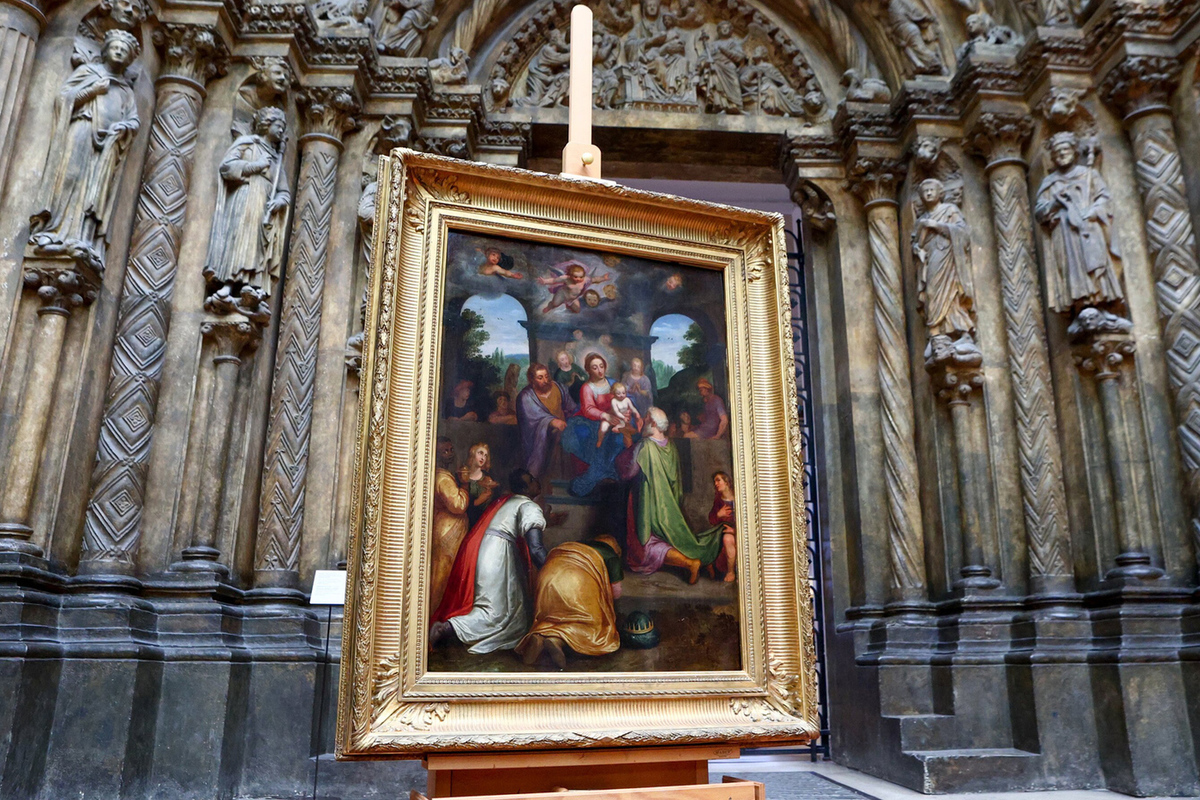The Pushkin Museum acquired the work of Rubens’ teacher: how the painting ended up in the Pushkin Museum
[ad_1]

Otto van Ven – painter, draftsman and book illustrator
The Pushkin Museum acquired the work of one of the greatest Flemish masters, Otto van Ven (1556–1629), who was the teacher of the brilliant Peter Paul Rubens. “The Adoration of the Magi” has already been placed in the 10th hall of the Main Building of the Pushkin Museum. MK found out how the painting ended up in Pushkinsky.
The Pushkin Museum specializes in Western art, and it is not at all easy for it to work in this field in today’s conditions. Relations with colleagues across the border are on pause, as are exchange exhibitions, so the museum is increasingly turning to its own holdings, for example, displaying Claude Monet’s “Rouen Cathedral” in a prominent place. And here is another reason for attention – the replenishment of the collection, and the work of not just anyone, but the teacher Rubens, who anticipated the triumph of his student in art.
Otto van Ven was a painter, draftsman and book illustrator who had a large workshop in Antwerp, where many apprentices worked. By the end of the 16th century, when Otto van Ven acquired a workshop there, he managed to get a good education, make a name for himself and see the world (he lived and worked in Rome, Munich, Cologne, Brussels). In Brussels, Otto was the court painter of the Duke of Parma, Alessandro Farnese. And having returned to Antwerp, he became an artist of the Guild of St. Luke, which was a large guild association of artists from different cities, which provided craftsmen with social protection, support, and orders. Actually, this is how Otto van Ven managed to get his workshop, which received not only orders for “cabinet” scenes and biblical scenes for local monasteries, temples and crafts guilds. She was involved in decorating Antwerp, for example, on the occasion of the ceremonial entry into the city of the son of the Emperor of the Roman Empire Albrecht VII and his wife Isabella, the new rulers of the Southern Netherlands. Just at this time, Peter Paul Rubens was working in the workshop, who soon became the main student and assistant and remained the teacher’s right hand for about 10 years. There are almost no works that Rubens signed with his name at that time, but he worked a lot and fruitfully. Later, Rubens would travel from Antwerp to Italy and Spain and become famous. And Otto van Ven – to Brussels, where he will head the mint and open his workshop there. But that comes later.
It is noteworthy that the painting, which now appears in the Pushkin Museum, was painted just when Rubens was studying and working with Otto van Ven. “The Adoration of the Magi” illustrates a famous biblical story, the work was created around 1600. The Pushkin Museum said it had studied the work in detail. “Analysis of the painting style, techniques of plastic modeling, color scheme and features of the interpretation of faces and figures in the painting “The Adoration of the Magi” convincingly prove that it belongs to the brush of van Wen. The work is distinguished by a high level of artistic quality,” the Pushkin Museum reports.
Although who knows, maybe later it will turn out that Rubens himself had a hand in the plot? The history of the early period of creativity is not so well known, there is much more to explore. How the painting got into Pushkinsky is a mystery shrouded in darkness. What is known is that the work ended up in Russia before the revolution and was kept in a number of private collections. From where it has now moved to the Pushkin Museum. The details of the agreement with the previous owner remained unknown. But Pushkinsky calls this acquisition a great success.
Newspaper headline:
The Pushkin Museum found a painting by Rubens’ teacher
[ad_2]
Source link






